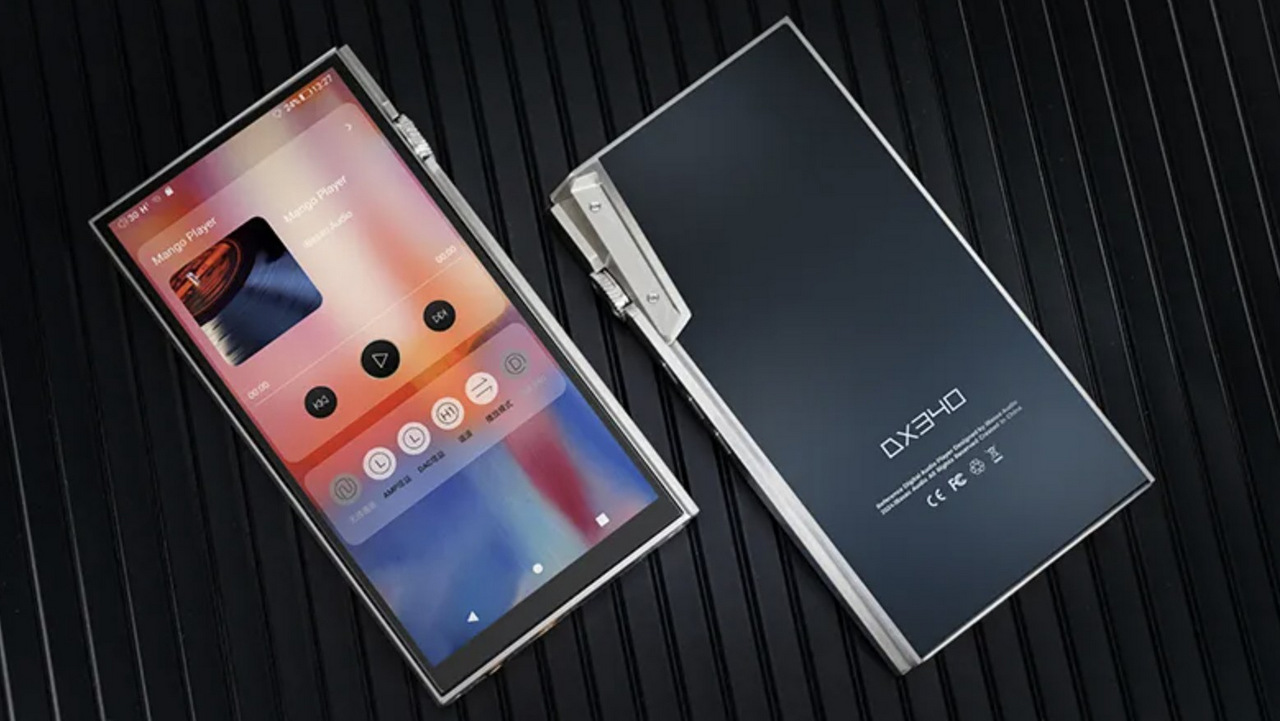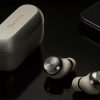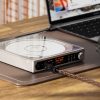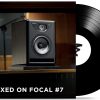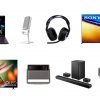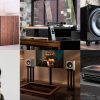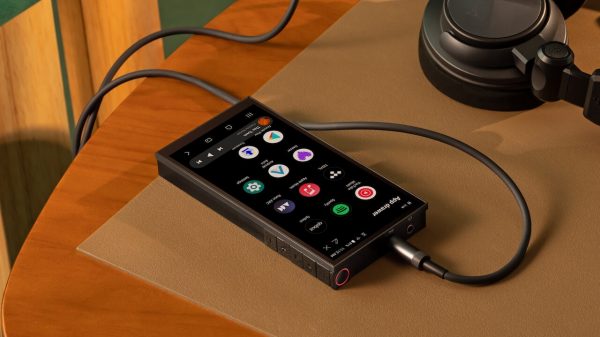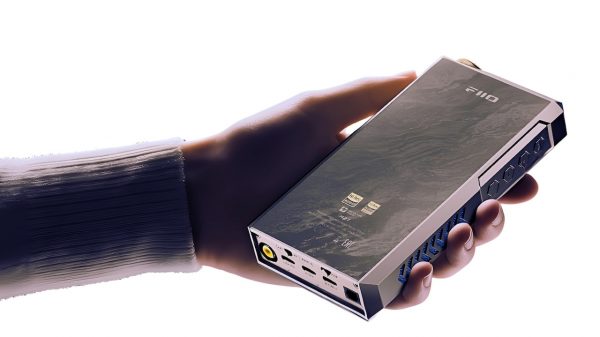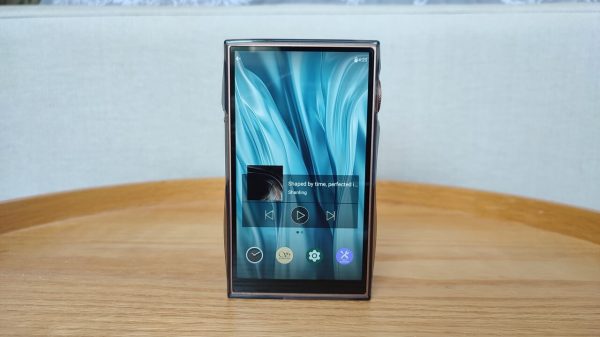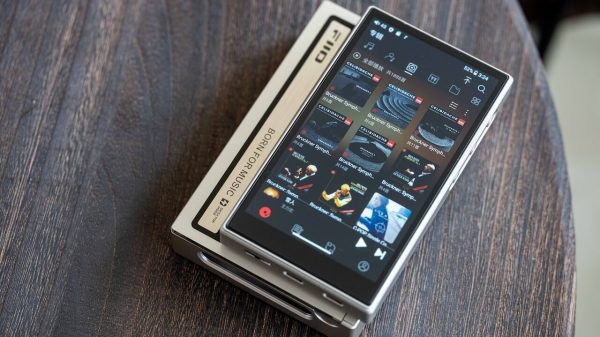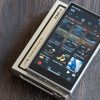Who drops two grand on a DAP in 2025? Someone who still owns CDs, hates Bluetooth with the fire of a thousand suns, and thinks streaming is sonic sacrilege. Or maybe—just maybe—someone who wants the best portable listening experience money can buy and doesn’t feel like paying the Astell&Kern royal markup for the privilege. Enter the iBasso DX340: a flagship DAP from Hong Kong’s digital audio disruptor, packing modular amplification, a customizable sonic signature, and a price tag that dares to play in the same luxury sandbox as the Koreans.
At $1,699—and an extra $219 if you want the AMP16 module instead of the stock one—the DX340 isn’t pretending to be budget-friendly. It’s aimed squarely at hardcore audiophiles who want their portable rig to punch like a desktop setup and sound like it’s been blessed by a mastering engineer in Kyoto. But in 2025, when every phone has a DAC, and dongles are everywhere, the question looms: is this modular marvel worth the asking price, or is it just an overbuilt status symbol for the lossless faithful?
Let’s plug in, fire it up, and see if the DX340 earns its place in your pocket—or ends up on the shelf next to that stack of unused microSD cards.
iBasso DX340 DAC Specs: 128 DACs Walk Into a Bar—This Ain’t Your Dad’s iPod
OK, fine—comparing the DX340 to an iPod was a cheap shot. One glance under the hood of iBasso’s flagship DAP and it’s obvious we’re not in Cupertino anymore. This thing is engineered to the teeth, and whatever you think of DAPs in 2025, the spec sheet alone makes it clear that iBasso isn’t messing around.
Let’s start with the DAC. It’s a fully discrete setup built from 16 cascaded sets of 8E PWM-DACs—do the math and you’ve got 128 individual DACs doing the heavy lifting. That’s not a typo. iBasso’s gone full mad scientist here, and the sheer number of DACs allows them to fine-tune the output in ways that are hard to achieve with a more conventional design. It supports PCM up to 32-bit/768kHz and native DSD512—because of course it does.
Clocking duties are handled by dual Accusilicon femtosecond oscillators, keeping everything locked in with a single, synchronized master clock. It’s the kind of overkill timing precision you expect when shaving nanoseconds off jitter is treated like a moral obligation.
Then there’s the brains behind the operation: iBasso’s FPGA-Master Gen 3. It’s not just handling the digital traffic—it’s shaping the sound. Gen 3 adds harmonic adjustment to the mix, letting iBasso dial in odd and even harmonics for that extra seasoning. More on what that does to the actual sound later.
All this tech wizardry translates to numbers that would make most desktop rigs sweat: THD+N at -119dB, with S/N and DNR both clocking in at 123dB. In plain English? This thing measures like a lab instrument, not a portable player.
As for amplification, the DX340 continues iBasso’s modular legacy with support for swappable amp cards. It plays nice with AMP12 through AMP16. The stock unit ships with AMP15, but for this review, I also had AMP16 on hand to see what the fuss is about. If you like to tweak your sound like a vinyl guy swaps phono cartridges, iBasso’s got you covered.
The AMP15 module included with the DX340 isn’t playing around—it uses eight BUF634A opamps and can deliver up to 2150mW of power at 32 Ohms when running on 12V DC. On battery alone, it still cranks out a solid 1200mW, which is more than enough to fry sensitive IEMs if you’re not careful. This isn’t your average low-gain output stage—it’s meant to drive full-size planars like they owe it money.
Now, if you want to go full audio alchemist, the optional AMP16 swaps opamp purity for tube romance. It features a pair of Raytheon JAN6418 tubes, complete with a dedicated 22.5V anode power supply just to keep the glass glowing. It also includes four BUF634A and four Texas Instruments dual opamps, allowing it to run in either tube or Class AB mode.
Power output in Class AB hits 2000mW at its peak, while tube mode tops out at 1500mW (both drop to 1000mW and 660mW respectively when running on battery). If that sounds like a lot of variables, that’s because it is—AMP16 turns the DX340 into a sonic chameleon, capable of clean power or tube bloom depending on your poison of choice.
Powering all of this is a patented dual-battery system—because of course there’s a patented dual-battery system. The DAC section gets a 4000mAh cell, while the amp section sips from its own 2100mAh supply. The theory is simple but smart: by splitting the power load, you reduce distortion, minimize interference, and keep both sections running clean. Real-world result? About 11 hours of battery life, with a full recharge in just 2.5 hours. Not bad for a portable powerhouse running more circuits than a small studio.
On the software side, the DX340 is built around a Qualcomm Snapdragon 665—midrange by phone standards, but plenty snappy for audio duty. You get 8GB of RAM and 256GB of internal storage, plus a microSD slot supporting up to 2TB for your FLAC hoarding habit. The interface is run via a non-SRC Android 13 skin or iBasso’s own Mango Linux OS, both of which are surprisingly clean and responsive. No weird lag, no crashes, no excuses.
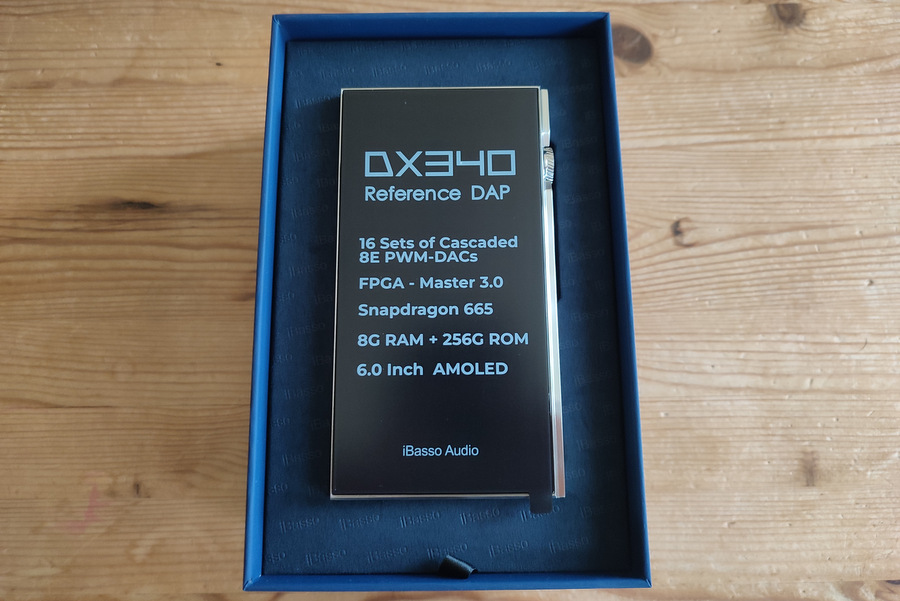
iBasso DX340 Design & Build: Premium Accessories That Make Your Other Gear Look Cheap
The iBasso DX340 doesn’t just arrive as a standalone player—it comes fully loaded with a solid set of accessories to get you started and keep your investment protected. Inside the box, you’ll find a premium case made from a combination of leather and metal, designed to protect the device without adding unnecessary bulk. Both front and rear screen protectors are included, along with spares, so you can keep those pristine displays scratch-free.
For connectivity, iBasso provides a USB-C cable and a coaxial cable, giving you flexible options for digital input and charging. There’s also a burn-in cable included—because yes, some audiophiles still swear by burn-in—and a 12V AC adapter for reliable power.
Rounding out the package are the usual warranty card and a quick-start guide to help you hit the ground running. It’s a thoughtful bundle that shows iBasso isn’t cutting corners on presentation or protection.
The moment you pick up the DX340, you’ll notice it’s no featherweight. Weighing in at a hefty 486 grams, this thing feels like it could double as a doorstop. Given the amount of hardware packed beneath the screen, it’s no surprise, but the weight definitely makes it less than ideal for casual pocket carry.
A big part of that heft comes from its size—150mm by 77.5mm by 19mm—and the generous use of 316 stainless steel in the chassis. iBasso went with steel over the usual aluminium, citing better acoustic stability and performance. So yeah, it’s built like a tank, and it sounds like one too.
On the control front, the DX340 sports a decently sized volume wheel that’s smooth and satisfying to use—until you realize it’s also perfectly placed to get nudged accidentally while you’re holding the player. Right next to it are three buttons lined up vertically for next track, play/pause, and previous track, keeping navigation straightforward.
The bottom edge packs the usual suspects: a balanced 4.4mm Pentaconn output, a single-ended 3.5mm jack, and a DC-12V input to deliver maximum juice to the amplifier. Flip it over to the top, and you’ll find a USB-C OTG output, a 3.5mm coaxial output, and a microSD slot for expanding storage.
Rounding things out is the 6-inch 1080p AMOLED display, which is bright and colorful enough to remain usable even in direct sunlight. A rare win in the portable audio world, and a welcome one at that.
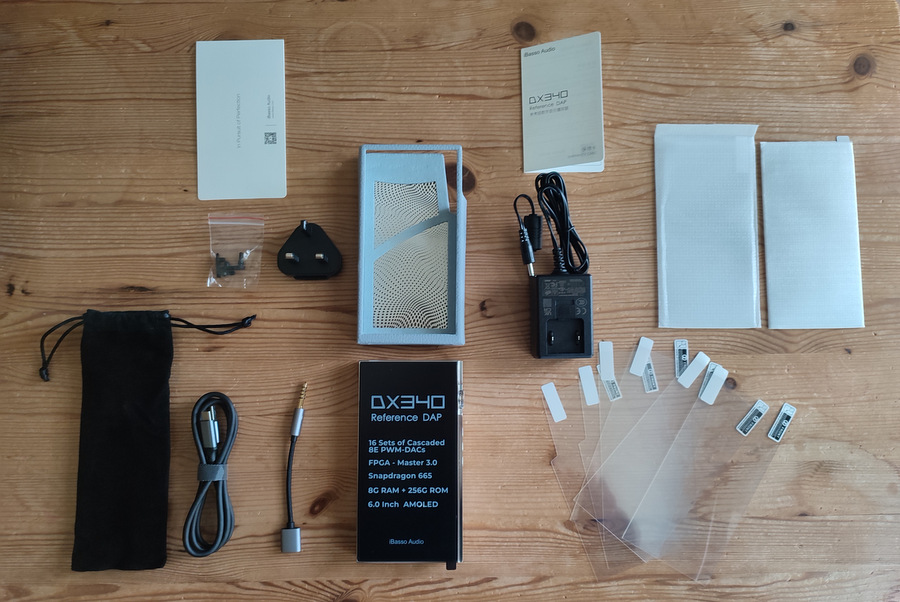
iBasso DX340 User Experience: Smooth Android Power Meets Audiophile Precision
The iBasso DX340’s Android 13 implementation feels instantly familiar if you’ve spent any time with a smartphone in the last decade. Navigating the UI was effortless—no learning curve, no fumbling around in the dark. It’s Android, just stripped down and tuned for music.
Thanks to the Snapdragon 665 chipset and 8GB of RAM, the device was snappy and responsive throughout my testing. Not once did I encounter lag, stuttering, or random slowdowns. That smooth experience is helped by a near-bloatware-free setup, though Google Play and full Google integration are included, opening the door to endless app customization and seamless syncing with your other Android gear.
If you want to get minimalist, iBasso offers Mango OS, a Linux-based alternative that’s leaner and promises better battery life and cleaner sound. In practice, I didn’t hear a noticeable difference in audio quality, so I mostly stuck with Android for convenience and familiarity.
Both OS options have sample rate conversion (SRC) disabled by default, which means they’re prioritizing signal integrity over software trickery. Whether that subtle purity translates to an audible difference is up for debate—but hey, audiophiles gotta audiophile.
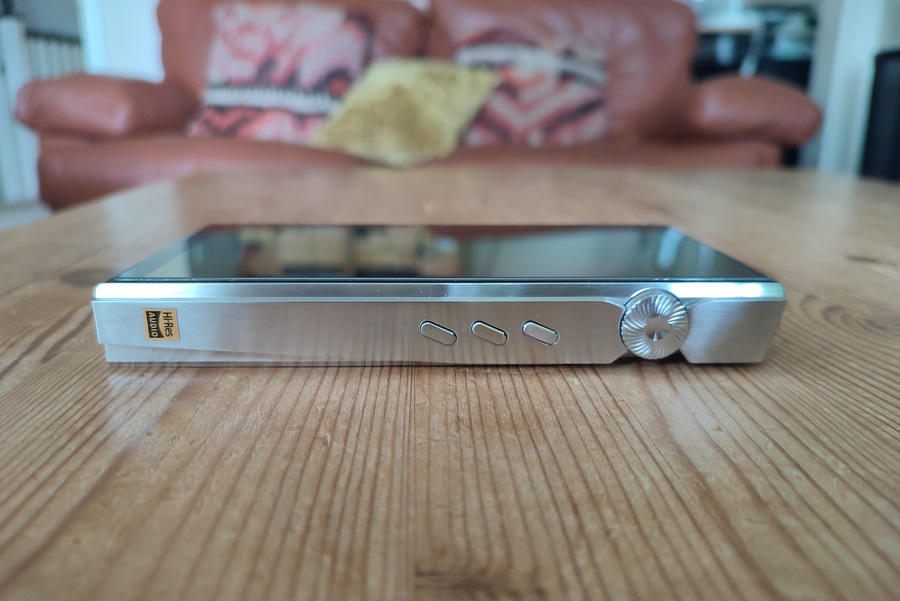
Listening & Synergy
Dropping close to two grand on a DAP means you better sound like it—and the iBasso DX340 doesn’t disappoint. Sure, you need to be a bit unhinged to spend an entire month’s paycheck on a music player, but for those of us neck-deep in the obsession, the DX340 delivers a sound that’s genuinely sublime and worth every penny—if you’re the right kind of audiophile.
The DX340 settles into a neutral-warm sound signature with a tasteful bass bump that never crosses into boomtown. The bass is sharp, agile, and meaty, delivering authority without veering into artificial territory. Honestly, the low end holds its own against my personal desktop DAC/amp rig, which clocks in around $1,000—a feat not many portables manage. Thundercat’s “Them Changes” was a joy, with the bass guitar hitting like a fistful of eardrum punches.
The midrange leans slightly into the lower mids, lending vocals and instruments a weight and presence that feels immersive rather than overblown. Take KALEO’s “Broken Bones” — Jokull’s powerful vocals cut through with more impact here than on the HiBy R8 II I’ve used. The rest of the mix stays clean, no muddiness creeping in. The upper mids deliver crisp, clear detail, making hi-hats and cymbals shimmer with lifelike realism.
Treble? It’s basically perfect: neutral, extended, and faultless right up to the highest registers. No unwanted roll-off means the sound stays airy and spacious, giving a sense of room and air that’s hard to find in portables.
But the real showstopper is the DX340’s soundstage and imaging. I struggled to find a meaningful gap between its technical prowess and my desktop setups like the Aune S17 Pro and SMSL DO400 stack. Listening to “Woman” by Jadu Heart, I picked out layers in the vocals and electric guitar that other devices simply missed. When it comes to placing instruments and voices in a three-dimensional space, the DX340 plays in the big leagues.
The DX340 packs enough power to drive nearly every full-size headphone out there—even on battery and running the AMP16 module in tube mode. That said, the HiFiMAN HE6se V2 pushed it a bit, requiring me to keep volumes in the moderate 65-70dB range to avoid strain.
Toggling the harmonic adjustment settings introduced subtle but noticeable shifts in the sound. My favorite was H2, which expanded the soundstage and added a sense of holography—plus a boosted subbass that gave extra depth. H1 is the default setting, while H5 cranks up the punch for those who want a bit more aggression. H3 and H4 focus on smoothing and emphasizing the upper mids, respectively, making the DX340 adaptable across a wider range of headphones.
As expected, swapping amp modules delivered the biggest sonic changes. AMP15 is the sharper, more neutral, and punchier card, perfect for those who want incisive clarity. AMP16, in tube mode, mellows things out with sweeter tones and a more spacious soundstage. Flip AMP16 into Class AB mode and you get something very close to AMP15’s character.
All told, the DX340 delivers a sophisticated, mature sound that keeps you engaged. The multiple ways to tweak its sonic signature add layers of versatility that keep it fresh—so boredom isn’t on the menu anytime soon.

The Bottom Line
The iBasso DX340 delivers a near-flawless music experience, combining top-tier sonic performance with a fluid, responsive user interface. It looks the part too—sleek lines and premium materials give it the kind of high-end finish you expect at this price point. Sure, only a select few audiophiles are willing to drop close to two grand on a DAP in 2025, but for those who are all-in, the DX340 demands serious consideration. With best-in-class sound and modular flexibility that lets you tailor the experience to your liking, this is a player built for those who want it all—and then some.
Pros:
- Exceptionally smooth and responsive Android 13 UI
- Powerful enough to drive most full-size headphones, even on battery
- Refined, dynamic, and highly detailed sound signature
- Swappable amp modules and harmonic adjustment for sonic customization
- Premium build quality with high-end materials
- Dual OS (Android & Mango) offers flexibility in use and sound tuning
Cons:
- Heavy and bulky for portable use (486g is no joke)
- Steep price tag—definitely not for casual listeners
- Volume wheel placement makes accidental adjustment easy
- Tube amp module (AMP16) drains battery faster and has limited power for demanding cans
Where to buy:
Related Reading:
- Astell&Kern A&Ultima SP4000 Drops At High End Munich 2025: Who Needs A Wardrobe When You Can Drop It All On A DAP?
- FiiO M21 DAP Launches At $329: Because Apparently $199 Wasn’t Fancy Enough
- Best Portable DAP (Digital Audio Player): Editors’ Choice 2024
- Astell&Kern A&Ultima SP3000T DAP: Review

